#queen consort of iran
Text

Faouzia Fouad, Reine Consort d'Iran - 1940's
#WWII#monarchie#monarchy#monarques#monarchs#princesse#princess#princesse d'égypte#egyptian princess#reine#queen#reine consort d'iran#queen consort of iran#people#faouzia fouad#fawzia fuad#iran#1940's
9 notes
·
View notes
Text
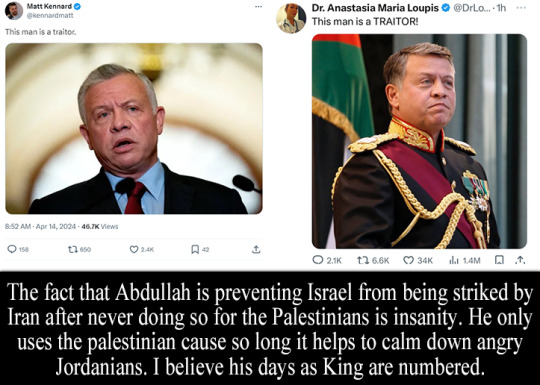
“The fact that Abdullah is preventing Israel from being striked by Iran after never doing so for the Palestinians is insanity. He only uses the palestinian cause so long it helps to calm down angry Jordanians. I believe his days as King are numbered.” - Submitted by Anonymous
“Abdullah risking the safety of his own citizens in order to defend Israel is the craziest plot twist. People in Amman say their homes were trembling from the maneuvers. He is a major clown show but maybe he is just trying to secure he and his family still have somewhere to flee when they get sacked” - Submitted by Anonymous
“the days of the Jordanian monarchy are numbered…. despite their palestinian queen consort” - Submitted by Anonymous
29 notes
·
View notes
Text
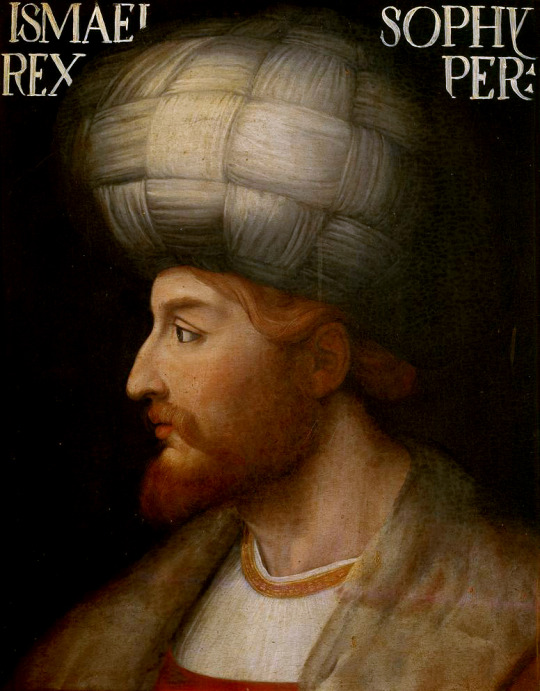
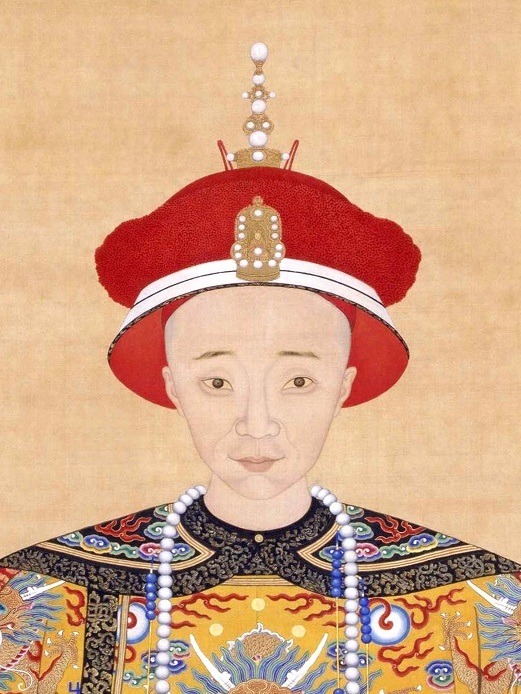
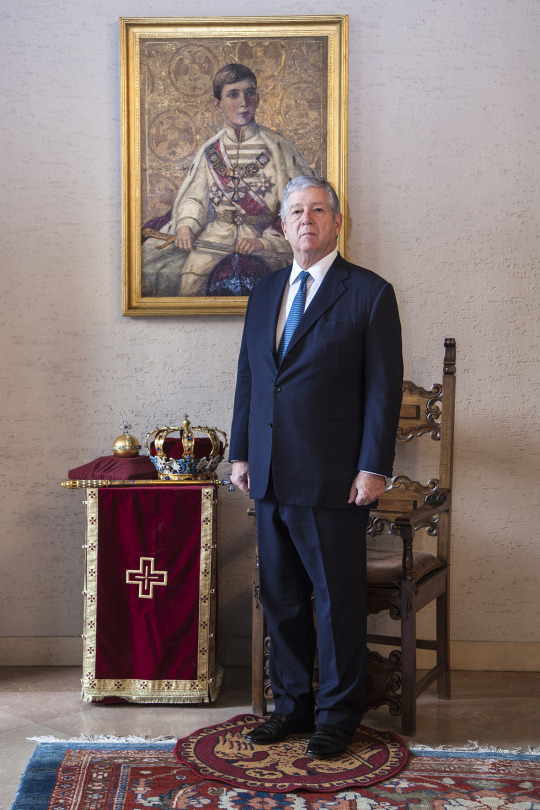

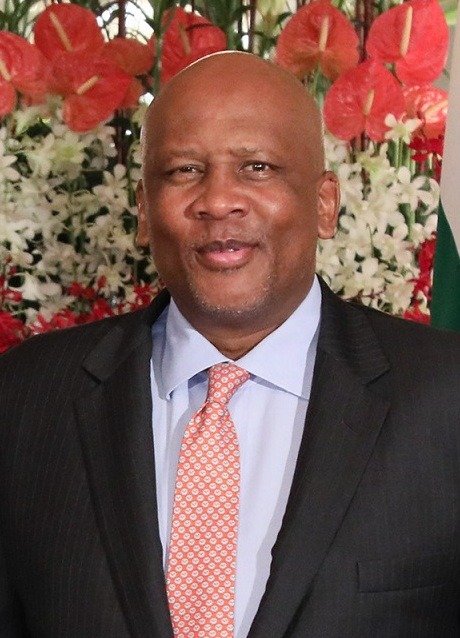

Royal Birthdays for today, July 17th:
Ismail I, Shah of Iran, 1487
Xianfeng Emperor, Emperor of China, 1831
Alexander, Crown Prince of Yugoslavia, 1945
Camilla, Queen Consort of the United Kingdom, 1947
Letsie III, King of Lesotho, 1963
Felipe de Marichalar y Borbón, Grandee of Spain, 1998
#ismail i#xianfeng emperor#crown prince alexander#camilla parker bowles#letsie iii#Felipe de Marichalar y Borbón#royal birthdays#long live the queue
7 notes
·
View notes
Text
Why “The Stolen Kohinoor Diamond” Won't Make An Appearance At King Charles III's Coronation
— May 4, 2023 | By Lauren Frayer

The Kohinoor diamond, set in the Maltese Cross at the front of the crown made for Britain's late Queen Mother Elizabeth, is seen on her coffin at London's Westminster Hall. Camilla, the diamond in her coronation crown, but will modify Queen Mary's crown, using diamonds from Queen Elizabeth II's personal collection. Alastair Grant/AP
LONDON — Of all the glittering British crown jewels, one will be conspicuously absent at King Charles III's coronation: the Kohinoor diamond.
Legend has it the 105-carat diamond — whose name means "mountain of light" in Persian — was found on a bank of the holy Krishna River in southern India at least 800 years ago. From there, the story goes, it spent centuries hidden inside a golden statue at a Hindu temple.
It passed through Mughal, Persian, Afghan and Sikh empires before ending up in the hands of Queen Victoria in the mid-19th century.
Along the way, people came to believe it was cursed. Calamity is said to have struck many a male royal who wore it. One strapped the diamond to his bicep. Another folded it into his turban. Most met grisly deaths — murdered, betrayed, defeated.
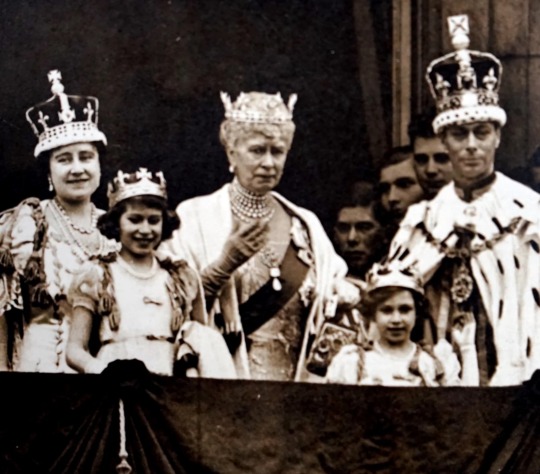
Photograph taken during the coronation of King George VI and Queen Elizabeth the Queen Mother, pictured with their children, Princesses Elizabeth and Margaret, and Queen Mary of Teck. Universal History Archive/Getty Images
So it's thought that only women — especially queen consorts — can wear the Kohinoor safely. Elizabeth, the wife of King George VI, wore it to her coronation in 1937, and again to her daughter Elizabeth II's in 1953. (There is no known record of Queen Elizabeth II wearing the diamond).
According to tradition, King Charles III's wife Camilla would be the next to wear the jewel at this weekend's coronation ceremony. But she will wear a different crown, one with 2,200 smaller diamonds.

Camilla and Charles attend Royal Ascot 2017 at Ascot Racecourse. Samir Hussein/Getty Images
That's because the Kohinoor has become a focus of anti-colonial anger. India wants the diamond back.
And it's not alone. So do several other nearby countries — including Iran and Afghanistan — whose own royals and rulers, over the centuries, possessed the diamond. For now, though, the British royal family has no intention of parting with the giant gemstone.
The museum where it's kept on display, in the Tower of London, is a popular destination for South Asian tourists.
"I've learned my best swears in front of the Kohinoor, in three different languages," says historian Anita Anand, the coauthor of Kohinoor: The History of the World's Most Infamous Diamond. "Every time you bring someone over from India or Pakistan, they just swear at it! Swear at the fact that it's here."
After Queen Elizabeth died last year, the Indian government said it has repeatedly raised the issue of repatriating the Kohinoor with the British government.
And this winter, Buckingham Palace made an announcement: The royal family had decided to leave the controversial gem out of the coronation ceremony for Charles and Camilla.
For now, it remains locked in the Tower of London, advertised as a "symbol of conquest" — firmly on British soil.
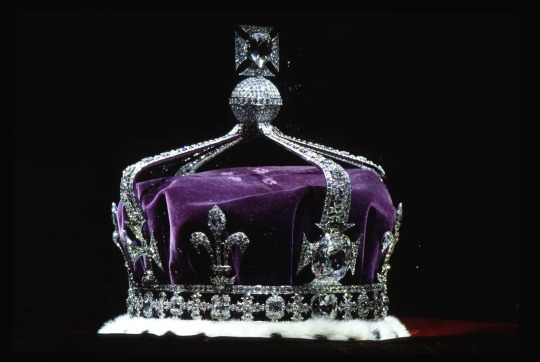
The crown of Queen Elizabeth the Queen Mother (1937), made of platinum and containing the Kohinoor diamond and other gems. Tim Graham/Getty Images
A Diamond the Size of a Coconut
Centuries before humans began mining diamonds deep underground, gems were only discovered after working their way up to the Earth's surface. And one of the places they seemed to do that most was the area of the Golconda alluvial mines, in southern India.
That's where, 800 or so years ago, someone went to take a bath in the Krishna River and apparently stumbled upon the biggest diamond then known in the world. Legend has it that it was the size of a coconut.
"People used to go to the rivers and take baths, and there were no soaps or cosmetics at the time, so they used the wet clay next to the riverbanks and applied it to their bodies," explains Mohan Devarapalli, 32, who gives Kohinoor-themed tours in southern India. "So while [collecting] the clay, they found the diamond."
They considered it a gift from the holy river and took it to their rulers, the 12th century Hindu kings of the Kakatiya dynasty. At the time, India was full of warring states, and the kings needed to keep their diamond safe.
So they hid it in plain sight — inside the eye socket of a large golden statue of the Hindu goddess Durga, in a temple that's still in use today, on the edge of a lake in the modern-day city of Warangal. One eye was glass, the other was diamond. But they looked identical.
"One of the [goddess'] eyes was the diamond, which no one knew — except the kings — because it looked like glass. Even the priests, they would not have known it," Devarapalli says. "It was a top-secret place to hide the diamond."
It worked — for a couple of centuries, at least.
The Diamond Becomes an Object of Violent Conquest
Rumors spread about this giant diamond guarded by a goddess. And when the Kakatiya dynasty was vanquished, around the 14th century, invaders from the north pillaged all the temples in the region and captured the gemstone.
"It's the nearest thing to the ring of power in Lord of the Rings. Whenever it goes, it stirs up anger, greed, murder and bloodshed!" says historian William Dalrymple, Anand's coauthor.
Experts have confirmed from the diamond's geology that it did come from the Golconda area of southern India.
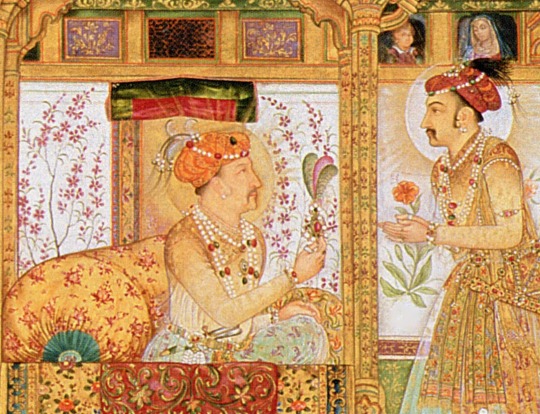
The opulence of Shah Jahan's court was a marvel in 17th century India. The Mughal emperor embedded the Kohinoor diamond in the Peacock Throne, his seat of power. Pictures from History/Getty Images
"But beyond that, its history is enormously disputed," Dalrymple says. "There's almost no record of it until it's on the top of the Peacock Throne, which is built in the 1640s by Shah Jahan, who's the same guy who built the Taj Mahal."
By the 17th century, much of India had been conquered by Muslim emperors, known as the Mughals. One of them, Shah Jahan, embedded the diamond in the Peacock Throne, his seat of power — which eventually was captured by another warlord with a weakness for diamonds.
"An Iranian leader called Nadir Shah defeats the enormous Mughal army. From Iran, [the diamond] then enters the hands of Ahmad Shah Abdali, who is the founder of Afghanistan," Dalrymple explains. "So the Afghans feel equally strongly that this is their stone."
Around this time, the diamond came be known as the Kohinoor. It was also around this time when legends of curses started to mount.
"In Indian astrology, a pure man without sin — a great man — can wear a diamond without a problem. But anyone who is flawed, or any diamond which is flawed, can bring terrific bad luck," Dalrymple says. "This whole mythology of cursed diamonds actually begins in Indian astrological texts."
By the time the British arrived on the scene — first as the East India Company in the 17th century, and then as colonial rulers — the diamond was only worn by women.
That suited Queen Victoria just fine.
A Colonial Gift For Queen Victoria
In the mid-19th century, British diplomats befriended a 10-year-old Punjabi Sikh prince, the Maharaja Duleep Singh, who'd inherited the Kohinoor. They took the boy's diamond as part of an 1849 treaty marking the end of the second Anglo-Sikh war — and presented it to Queen Victoria. She wore it in a dangling bracelet, and later had a giant brooch made to hold the diamond, which she wore to sit for a famous portrait.
That loss of the Kohinoor is still felt — memorialized — in India to this day.

Ruins of the historic Golconda Fort on the outskirts of Hyderabad in southern India. Experts have confirmed that the Koh-i-noor diamond came from the Golconda area. Majority World/Universal Images Group/Getty Images
In a sound-and-light show for tourists at the 11th century Golconda Fort in the southern city of Hyderabad, where the Kakatiya kings once ruled, the recorded voice of Bollywood's biggest star, Amitabh Bachchan, extolls the Kohinoor's brilliance and bemoans where it is today.
"The Kohinoor is still in Britain. This is just a replica," Bachchan's voice bellows in the darkness, as a giant hologram of a diamond is projected onto one of the fort's walls.
Tourists shake their heads.
"The British never apologized about anything," says Saudamini Sharma, 25, touring the fort. "They're the ones who came and tried to, you know, quote unquote 'civilize people.' But civilized people don't steal — don't take away stuff and never return it."
India's Claim To The Kohinoor
There are growing calls to return the Kohinoor. But to where? Over the centuries, it's been held in what is now India, Pakistan, Iran and Bangladesh. Even the Taliban claim it's theirs.
From the return of Jewish art looted by the Nazis to colonial artifacts in British museums, Western governments in recent years have started to address questions of ownership of archaeological and cultural heritage. A London museum recently returned the Benin Bronzes to Nigeria. Greece is asking the British Museum to return the Elgin Marbles.

Benin Bronzes are displayed in Berlin in 2022. Germany returned 22 of the looted objects to Nigeria in December. A London museum is also returning Benin Bronzes. Michael Sohn/AP
But the U.K. government and royals have rarely commented on the Kohinoor. In 2010, then-Prime Minister David Cameron, asked about it on a trip to India, said returning the diamond would set a dangerous precedent for British institutions.
"What tends to happen with these questions is that if you say yes to one, you suddenly find the British Museum would be empty!" Cameron told New Delhi Television. "I think I am afraid to say, to disappoint all your viewers, it is going to have to stay put."
Meanwhile, the British sell tickets (currently, about $37 for adults) to see the Kohinoor — and have done so since 1851, when the diamond was the star attraction at the World Exhibition at the Crystal Palace in London.
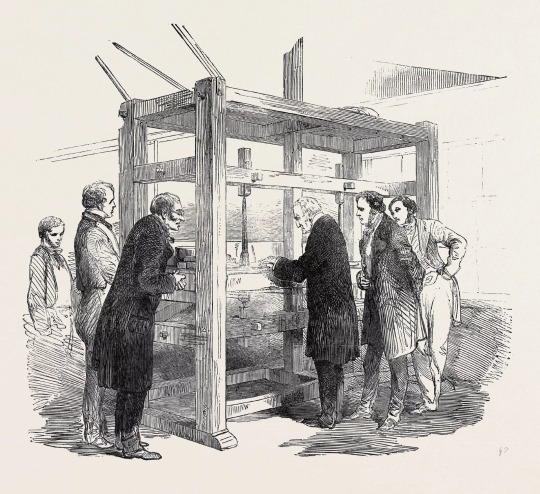
Re-cutting the Koh-i-Noor diamond, 1852. Universal History Archive/Getty Images
It was for that exhibition that the British royals had the diamond cut down — lopped off at least 85 carats. The diamond had already been whittled down from its legendary coconut size over the centuries, as part of efforts to eliminate imperfections or possibly even steal parts of it. In Victorian Britain, the taste was for "brilliant" cut diamonds, which required a reshaping of the gem to refract more light.
"To Indians, it's actually a perfect, perfect metaphor for what India went through: It was reshaped and re-cut and diminished into something that suited a British palate and British needs," Anand says.
"We [in Britain] don't really learn about the history of empire! It's painted as if it's something very long ago, not really interesting — and yet it shapes the world we live in today," Anand says. "It's always glimmered in my life. If you are a British Asian, you know about the Kohinoor."
Last year, India and Pakistan celebrated 75 years since winning their freedom from the British crown. But for many, the story is incomplete as long as the British crown still has their diamond.
— NPR.Org
3 notes
·
View notes
Text
Attendees of King Constantine II’s Funeral
Immediate Family
Queen Anne- Marie
Crown Prince Pavlos
Crown Princess Marie-Chantal
Princess Maria-Olympia
Prince Constantine-Alexios
Prince Achilies-Andreas
Prince Odysseus-Kimon
Prince Arisites-Stavros
Princess Alexia
Carlos Morales Quintana
Arrietta Morales y de Grecia
Anna-Maria Morales y de Grecia
Carlos Morales y de Grecia
Amelia Morales y de Grecia
Prince Nikolas
Princess Tatiana
Prince Philippos
Princess Nina
Princess Theodora
Mr. Mathew Kumar
Princess Irene
Prince Michael
Marina, Consort of Prince Michael
Princess Alexandra Elli Francisca Maria of Greece, Mrs. Mirzayantz
Mr. Darius Mirzayantz
Foreign Royals
Spain
King Felipe VI
Queen Letizia
Queen Sofia
The Infanta Elena, The Duchess of Lugo
Infanta Cristina of Spain
Don Felipe de Marichalar y Borbón
Doña Victoria de Marichalar y Borbón
Don Juan Urdangarin y Borbón
Don Pablo Urdangarin y Borbón
Don Miguel Urdangarin y Borbón
Doña Irene Urdangarin y Borbón
Denmark
Queen Margrethe Ii
Crown Prince Fredrik
Prince Joachim
Germany
Princess Benedikte, Dowager Princess of Sayn- Wittgenstein- Berlerberg
Princess Alexandra of Sayn-Wittgenstein-Berleberg, The Countess Ahlefeldt-Laurvig-Bille
United Kingdom
The Princess Anne, The Princess Royal- Representing The King
Sir Vice admiral Timothy Laurence
The Lady Gabriella Kingston-represting The Prince of Wales
Mr. Thomas Kingston
Belgium
King Philippe
Queen Mathilde
Bulgaria
King Simeon II
Germany
Prince Berhand, The Margrave of Baden
Princess Stephanie, The Margravine of Baden
Prince Ernst-August, The Hereditary Prince of Hanover
Princess Ernest-August (Ekaterina), The Hereditary Princess of Hanover
Prince Christian of Hanover
Princess Christian (Sofia) of Hanover
Chantal, Princess of Hanover
Iran
Empress Farrah
Jordan
Queen Noor-representing her stepson
Princess Rayiah bint al-Hussien
Luxembourg
Grand Duke Henri
Grand Duchess Maria Teresa
Monaco
Prince Albert II
The Netherlands
King Willeim-Alexander
Queen Maxima
Princess Beatrix
Norway
Crown Prince Haakon-representing his father, The King of Norway
Crown Princess Mette-Marit
Princess Märtha Louise
Romania
Prince Radu-representing The Custodian of the Royal Crown of Romania
Sweden
King Carl XVI Gustaf
Queen Silvia
Princess Christina, Mrs. Magnusson
Russia
Grand Duchess Maria Vladimirovna of Russia
Yugoslavia
Crown Prince Alexander
Crown Princess Katherine
Other Notable People
Pia Getty-sister of his daughter-in-law. Marie Chantal
Marie Blanche Bierlein-mother of his daughter-in-law, Tatiana
Thomas Flohr-father of his daughter-in-law, Nina
4 notes
·
View notes
Text
CRISIS
After speculation over whether Queen consort Camilla would be wearing the Kohinoor diamond in her coronation crown, global conversations about the Kohinoor diamond have resparked. As a speech by a well-known Indian politician picks up momentum and goes viral social media users are calling for the British government to surrender the diamond and other artifacts obtained by the British Empire during colonization with the #ReturnTheKohinoorToIndia. 😮
----
In response to growing demands, All Indian Human Rights Organization (AIHRO), an Indian non-governmental organization (NGO) filed a petition with the International Criminal Council, urging the government to take immediate action to retrieve the Kohinoor Diamond. The petition argues that the diamond was wrongfully taken during the colonial era and should be returned to its country of origin, as it holds immense cultural and historical significance for India. They demand Immediate Repatriation and a formal apology and acknowledgment from Britain for the acquisition of the diamond during the colonial era and a letter of formal apology for other notable crimes such as the Jallianwalla Bagh and the loot of treasures such as the Amaravati Stupa. Additionally, there is mounting diplomatic pressure from other nations, with other BRICS nations calling for the return of the diamond to India.
However, Britain maintains their views that the diamond is an integral part of the British Crown Jewels and holds significant cultural value for the nation. They emphasize the diamond's preservation and accessibility to a global audience through its display in the Tower of London.
As this controversy gains momentum, the situation becomes further complicated as rival claims of ownership arise from the multiple stakeholders and the governments of Pakistan, Afghanistan, and Iran.
Members of the QUAD express support for a peaceful resolution between India and Britain, encouraging diplomatic negotiations and mutual understanding. International museums express interest in hosting temporary exhibits of the Kohinoor Diamond to ensure wider access and appreciation of its cultural value while the ownership dispute is ongoing.
Multiple stakeholders call for the involvement of the UN, particularly UNESCO, as a mediator to find a solution that respects the cultural significance and historical connections of each country involved.
1 note
·
View note
Text
RNZ Pacific 1206 18 Oct 2022
7245Khz 1158 18 OCT 2022 - RNZ PACIFIC (NEW ZEALAND) in ENGLISH from RANGITAIKI. SINPO = 54444. English, music until pips and news @1200z anchored by Peter McIlwaine. The government is winding down some of its Covid19 powers saying that they are no longer justified. Vaccine mandates, and MIQ lockdowns, will all be scrapped. Only a handful of public health measures will remain. The government would need to pass new legislation to reintroduce them but the seven-day isolation period and the requirement for mask-wearing in certain high-risk healthcare settings will stay for the time being, but even those measures will be reviewed next month. The Booker prize for fiction has gone to a Sri Lankan author Shehan Karunatilaka for his novel: "The Seven Moons of Maali Almeid". He was presented with the prize by the Queen Consort at a ceremony in London. Set amid the horrors of civil war in Sri Lanka. The novel has been described as a darkly comic tale about a war photographer and gambler, who tries to reach out to loved ones after waking up dead. The Local Government Minister is pushing to find common ground with new Auckland mayor Wayne Brown over the controversial three waters policy. Mr. Brown has asked the city's water management company and council chief to stop work on what he calls a doomed proposal. (Local car crash kills one person). Fears are growing for a female Iranian athlete, who competed without a hijab at a climbing competition in South Korea in defiance of Iran's strict rules. Elnaz Rekabi's family and friends lost contact with her on Monday after she said she was with an Iranian official on Tuesday. The Iranian embassy said she had flown back to Tehran. The Labour party has confirmed that its investigation did recommend Dr. Sharma be expelled from the party for bringing it into disrepute, but it says no final decision has been made. Sports. @1204z trailer for RNZ "Country Life." @1205z Weather Forecast: partly cloudy with isolated showers. @1206z "All Night Programme" anchored by Peter McIlwaine. QRM=ham SSTV. Backyard fence antenna, Etón e1XM. 100kW, beamAz 325°, bearing 240°. Received at Plymouth, United States, 12912KM from transmitter at Rangitaiki. Local time: 0658.
0 notes
Photo

Queen Elizabeth's (the Queen Mother) crown
India – ironically once called the ‘Jewel in the Crown of the British Empire’ – has now started calling for its own jewel, in one of Britain’s crowns, back.
The Koh-i-noor weighs around 105.6 carats, and is thought to have been discovered in southern India in the 1300s.
But, it is currently sitting at the top of the Queen Mother’s crown, which was first made back in 1937 for her coronation as King George VI’s Queen consort.
The UK got the Koh-i-noor when the East India Company took the jewel from the deposed 10-year-old Maharaja Duleep Singh in 1849, as part of the Treaty of Lahore.
But, due to the stone’s elaborate history, people from all over the world have tried to claim it as their own. It has passed through Mughal emperors, Iran, Afghanistan and Sikh maharajas over the years.
According to ABC News, the jewel was said to be “cursed for men”, and so was first worn as a brooch by Queen Victoria, before being placed into separate crowns for Queen Alexandra and Queen Mary.
It is currently on display in the Queen Mother’s crown in the Jewel House at the Tower of London. Some reports suggest it will be worn by Queen consort Camilla when King Charles is crowned.
India was officially placed under British Crown rule in the 19th Century, and it did not become independent until 1947 – a moment now widely considered the beginning of the end for the entire British Empire.
The Palace has not openly acknowledged these calls for the jewels to be returned.
But, the changeover from the Queen to her successor King Charles III has prompted a wide range of questions about the royal family’s legacy.
So, acknowledging the origins of the some of the royal jewels could potentially be addressed in the future – especially as more Commonwealth nations are considering removing the monarch as their head of state.
The exact values of these stones is also unclear, although their history means they would be worth a fortune.
0 notes
Text
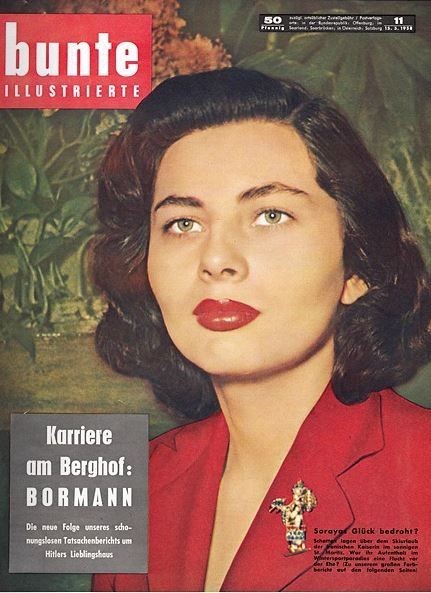




Soraya Esfandiary-Bakhtiary
Born in 1932, died in 2001
She was the queen consort of Iran as the second wife of Shah Mohammad Reza Pahlavi, whom she married in 1951. Their marriage suffered many pressures, particularly when it became clear that she was infertile. They divorced in 1958.
After a brief career as an actress, and a liaison with Italian film director Franco Indovina (she became depressed after his death in a plane crash), Soraya lived alone in Paris till her death.
732 notes
·
View notes
Note
Hi. Thank you for answering all our questions! How do you say king, queen, prince, and princess in Persian?
Hello!
The word شاه (šah), “king”, has been the specific title of Iranian and Afghan kings for centuries until 1973 (for Afghanistan) and 1979 (for Iran), along with شاهنشاه (šāhanšāh) or شاه شاهان (šāh-e šāhān), “king of kings”. The word پادشاه (pādešāh) has a more general meaning and is used to refer to kings of other countries, as well as kings of less prominent dynasties. Other titles, of Arabic and Turkic origin, hold the meaning of “ruler” and have also been used, such as امیر (amir), ملک (malek), سلطان (soltān), and خان (xān).
For a ruling queen, the feminine form of ملک - which is ملکه (maleke) - is used. For a queen consort, the word شهبانو (šahbānu) is used.
For a prince, the word شاهزاده (šāhzāde) - literally “born of king” - is used, as well as distorted forms of the same word, شهزاده (šahzāde) and شازده (šāzde). The word شاهپور (šāhpur), “son fo king”, has been used. In addition, in the times of the Safavid and Qajar dynasties (16th to 20th centuries), princes would add the title میرزا (mirzā), meaning “educated”, to their first name.
For princesses, both شاهدخت (šāhdoxt), “daughter of king”, and شاهزاده خانم (šāhzāde xānom), “lady born of king”, have been used.
34 notes
·
View notes
Note
poc queer novels?????? please???
yes!! thank you for asking!!! i mostly read YA novels so thats what’ll mostly be represented here ♥ also i might not get all of the rep and content warnings exactly right sorry. also this is (obvs) not an exhaustive list and if youre looking for something more specific (like plot points or specific rep) feel free to ask!
Black rep:
• You Should See Me In A Crown by Leah Johnson - bi - a girl goes out for prom queen in order to win the scholarship money that goes with it and ends up falling for one of the other contestants. just a book full of joy that will have you smiling the whole time (cw homophobia, family illness)
• Felix Ever After by Kacen Callender - trans, gay - a trans boy gets outed and deadnamed at his school so he begins catfishing who he thinks is the culprit to get back at him. this is a really tough one emotionally but a great read regardless with a great romance (cw transphobia)
• Full Disclosure by Camryn Garrett - bi, gay, hiv+ - a girl starts falling for a boy until she’s blackmailed by someone who threatens to tell the whole school her hiv+ status unless she stops hanging around her crush. musicals, cute romance, predictable but worth it for the fun that is this book
• All Boys Aren’t Blue by George M. Johnson - gay - a memoir manifesto about the author’s life growing up as a Black queer person. although it’s not covered in the book, the author later came out as nonbinary (cw homophobia, transphobia, incest)
• The Stars and the Blackness Between Them by Junauda Petrus - lesbian - when a girl from Trinidad gets caught by her mother with another girl, she’s shipped off to America to live with her father where she meets another girl struggling with a terminal illness. this one also deals a lot with the prison industrial complex (cw homophobia, racism)
• Anger Is A Gift by Mark Oshiro - gay, trans, lesbain - a boy gets caught up in protests after a riot breaks out at his school. another book with lots of great casual queer rep but also a hard read, especially in times like this (cw racism, transphobia, major character death, violence)
Latinx rep:
• Cemetery Boys by Aiden Thomas - trans, gay - own voices trans rep about a trans boy who’s desperate to prove to his family that he’s a true brujo and ends up summoning the wrong ghost. hijinks ensue. this one is so cute please read it also i can’t see takis at the store without thinking of this book (cw transphobia, parental abuse)
• More Happy Than Not by Adam Silvera - gay - i’m not sure how to summarize this without giving anything away but it’s soft scifi set in NYC with unrequited love. not a happy ending but one of the best plot twists ive read (cw homophobia)
• Aristotle and Dante Discover the Secrets of the Universe by Benjamin Alire Saenz - gay - set in the 80s, two boys living in El Paso, Texas meet one summer and the book follows them as their friendship grows. slow and character driven, also my all time favorite book. basically a ya classic at this point (cw homophobia, transphobia, on page violence)
• Red White and Royal Blue by Casey McQuiston - bi, gay, trans - first son of the united states and a prince of wales fall in love. the 2020 everyone wished for. this isn’t won voices for the latinx rep and i’ve heard some own voices reviewers say that it’s not the greatest rep unfortunately. great casual queer rep and really funny (cw homophobia)
Middle Eastern rep:
• Like A Love Story by Abdi Nazemian - gay - set in 1989, it follows a friend group making their way through the aids crisis in NYC. lots of gay culture including diva worship and Madonna. just as gay 80s as you’d expect and wonderful for it (cw homophobia, illness)
• Darius the Great is Not Okay by Adib Khorram - gay - although not explicitly gay until the second book, the main character is certainly gay coded. it follows him as he visits Iran for the first time to meet his grandfather before he passes and his struggles relating to his Persian heritage. this book is definitely worth sticking around for the queer rep in the second book and this first one is amazing regardless (cw racism, illness)
East Asian rep:
• I’ll Be The One by Lyla Lee - bi, lesbian - a girl tries out for a kpop competition despite people telling her she’ll never win due to her weight and falls for a competitor. this one is so damn cute ;-; also i know close to nothing about kpop so not knowing the industry doesn’t take away from the book at all imo (cw fatphobia, homophobia)
• Girls of Paper and Fire by Natasha Ngan - lesbian - a fantasy novel that follows a group of girls kidnapped by the demon king to be his human consorts. a forbidden romance blossoms (cw rape, violence)
South Asian rep:
• The Henna Wars by Adiba Jaigirdar - lesbian - an enemies to lovers romance about competing henna stands in a class business competition, this also talks about cultural appropriation vs appreciation (cw racism, homophobia)
Indigenous rep:
• Ziggy, Stardust & Me by James Brandon - gay, two spirit - I tried not to include books where the main character isn’t the representation here but unfortunately I don’t have many queer indigenous books. if you know any please recommend them! this one follows a boy in the 70s going through conversion therapy when he falls in love with a boy he’s doing a school project with. the love interest is indigenous and two spirit (cw homophobia, anti-indigenous racism, parental abuse)
#lgbt#queer#books#ya lit#bookblr#anonymous#thanks for asking ♥♥♥#i love books#can recommend all of these wholeheartedly#and i couldnt add all i wanted to either#long post#feel free to reblog!
112 notes
·
View notes
Text

Faouzia Fouad, Reine Consort d'Iran - 1942
Photo de Cecil Beaton
#WWII#monarchie#monarchy#monarques#monarchs#reine#queen#reine consort d'iran#queen consort of iran#people#faouzia fouad#fawzia fuad#cecil beaton#iran#1942
22 notes
·
View notes
Photo

Soraya Esfandiary-Bakhtiary (1932-2001), queen consort of Iran and actress
my source: https://fuckyeahhistorycrushes.tumblr.com/post/635242269233086464/soraya-esfandiary-bakhtiary-born-in-1932-died-in
20 notes
·
View notes
Text



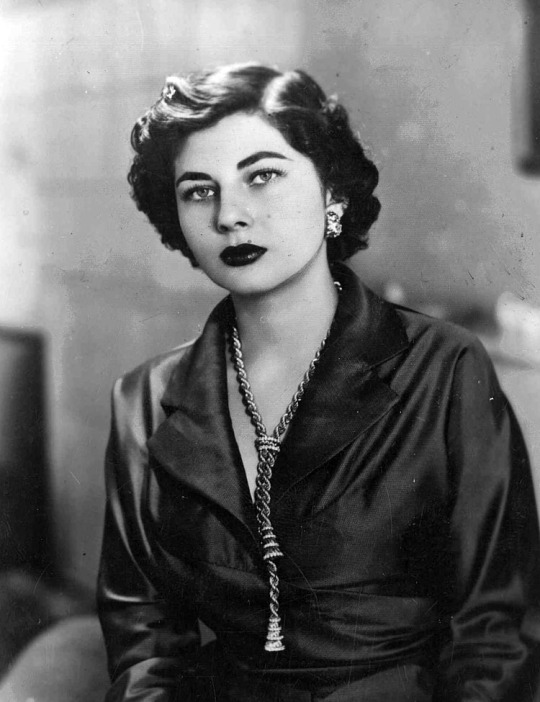



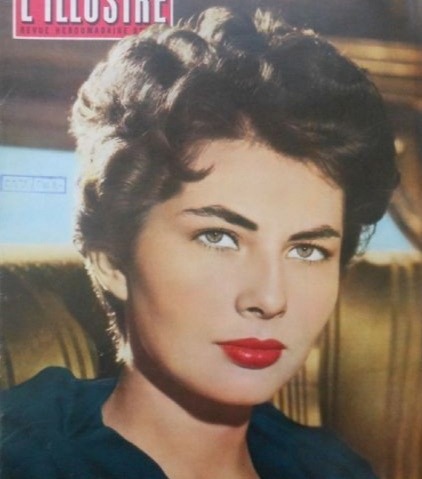
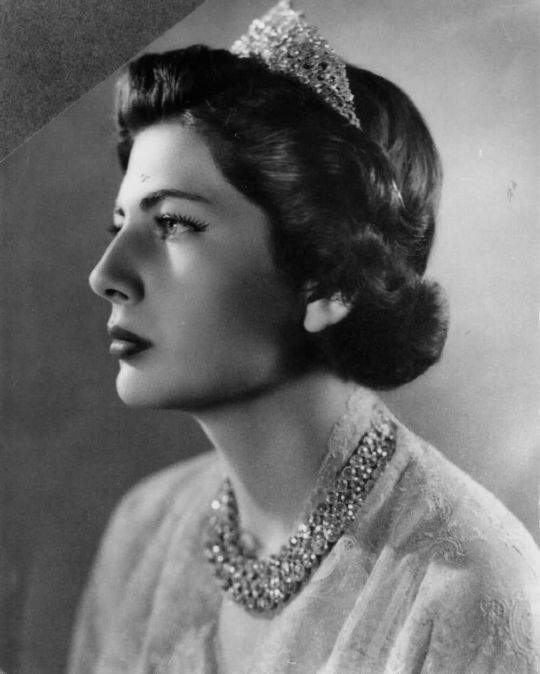

Soraya Esfandiary-Bakhtiary (1932-2001).
Queen consort of Iran.
.
She was the queen consort (shahbanu) of Iran as the second wife of Shah Mohammad Reza Pahlavi, whom she married in 1951.
.
Their marriage suffered many pressures, particularly when it became clear that she was infertile. She rejected the Shah’s suggestion that he might take a second wife in order to produce an heir, as he rejected her suggestion that he might abdicate in favour of his half-brother. Being half German Christian, she was mistrusted by Shiite clerics; she was also resented by the Shah’s possessive mother. In March 1958, the Shah wept as he announced their divorce. The British Ambassador claimed that Soraya was the Shah's only true love.
.
Following the marriage, Soraya headed the family charity in Iran. Soraya's marriage was troubled as Mohammad Reza's mother and sisters all saw her as a rival for his love just as they had with his first wife Princess Fawzia Fuad of Egypt, and continually snubbed and inflicted petty humiliations on her.
.
As Soraya was brought up in Europe, Iran was a "strange" country to her, which the Iranian-American historian Abbas Milani argued explained her attitudes towards ordinary Iranians, which he called borderline racist. Europe was always the model for excellence in everything for her.
.
Soraya who was fascinated with Hollywood and enjoyed meeting American film stars during her stay in Los Angeles. During her time in Los Angeles, Soraya met her favorite stars who were Grace Kelly, Lauren Bacall, Bob Hope, Esther Williams, and Humphrey Bogart. A photograph of Queen Soraya water-skiing in Miami while wearing a bikini become extremely controversial in Iran.
.
Soraya was very jealous and demanded that her husband show love only to her, not even to Princess Shahnaz, the Shah's daughter by his first marriage.
.
After a brief career as an actress, and a liaison with Italian film director Franco Indovina (she became depressed after his death in a plane crash), Soraya lived alone in Paris till her death.
[Submission]
#Soraya Esfandiary-Bakhtiary#Soraya Esfandiary Bakhtiary#Soraya of Iran#1950s#1960s#iran#iranian history#german history#germany#beauty#women history#women in history#herstory#royalty#queen#history#history lover#history nerd#history geek#history lesson#history buff#history crush#history hottie#historical hottie#historical babes#historical figure#historical#historic
180 notes
·
View notes
Note
I haven't unfollowed you because whenever you post something, it's usually something interesting that I didn't know about before, or a quality Felicity Jones post. Or Christopher Lee, who I mostly learned about from your posts! And on a related note, your profile pic always makes me smile.
Thank you, glad the (limited) content is still interesting!
Ah, yes, the profile pic. Fun fact, it is actually from a movie called “She” (1965) - your stereotypical 60s adventure movie. It has some problems, but it also has Christopher Lee, a (dubbed again) Ursula Andress, the queen consort of Iran Soraya, and Cushing as Professor Holly. It also features him dancing in an “oriental bar”. That was certainly something...
Less interesting fact: That pic actually inspired a character in a writing RPG called “Nevada Tarkin”...
4 notes
·
View notes
Text
Kingdoms that are not a part of the UKA:
Avalor - ruled by a council - based on Chile/Argentina
A beautiful and warm kingdom, being restored after a conquering and purge by a witch, Shuriki. It is to be ruled by a select council until Crown Princess Elena will come of age and be crowned Queen.
Did not join the UKA because of traumatic experiences with a ban on magic.
Azar - ruled by an elected council - based on South Africa
Previously, a colony of the Southern Isles, growing various grains. Now, an incredibly diverse kingdom, even before they welcomed faeries seeking political asylum.
Did not join the UKA because they value independence.
Devyat - ruled by Queen Libuše and Prince-Consort Premysl - based on Czechoslovakia/Bohemia
Left the closed-off Faraway about 30 years ago with Apheldotia. Under their prophetic Queen, the nations mentality changed a lot, making them education and philosophy focused.
Did not join the UKA because the Queen foresaw that it is an incorrect decision.
DunBroch - ruled by King Fergus and Queen Elinor - based on Scotland
Current King and Queen united the four clans previously at war with each other under the perceived threat of rising power of Camelot.
Were not invited to join the UKA.
Faraway - ruled by several Kings and Queens - based on Russian Federation
The most closed-off land, surrounded by a magic barrier that only lets invited people through. It is actually made up of many smaller kingdoms and such, but the detailed maps are not available for outsiders.
Did not join the UKA. Did not give a reason.
Hakalo - ruled by Chief Lani - based on Pacific Islands
A tropical kingdom scattered across many islands. The Chief’s line was blessed by the Ocean, with a myth/story of Maui and Moana being one of the most well-known.
We’re not invited to join the UKA.
Jangal - ruled by Emperor Aurangzeb- based on India
Where sixty years ago a patchwork of small kingdoms stood, now stands a great Empire. Current Emperor’s grandfather united the territory by conquer.
Did not join the UKA because they do not agree with their policies regarding Neverland.
Inka Empire - ruled by Emperor Kuzco - based on Peru/Ecuador
The Empire flourishes under the rule of the current Emperor. Previous ruler, Consort Yzma, was sent to the Isle of the Lost, for crimes of high treason and attempted usurpation, among others. They pay a yearly tax to UKA for Her imprisonment.
Did not join the UKA because they did not see a benefit to them. They have already enforced a restrictive laws on magic and the economy is flourishing in trade with Avalor.
Macadamia - ruled by King Abtin and Queen Lyanna Lamour - based on Iran/Persia
A prosperous kingdom that grew around a ring of trade cities. Sent a group of traitors to the Isle of the Lost, pay a yearly tax.
Did not join the UKA because of their high value of independence.
Nottingham - ruled by King Richard - based on England
A coastal land surrounded from all sides by Auradonian Kingdoms. Legendary Robin Hood is now the King’s advisor.
Did not join the UKA because they do not agree with their policies on magic, among other reasons censored here for propriety.
Kiburi Ardhi - ruled by Queen Kiara and King Kovu - based on Kenya/Tanzania
A large kingdom on Alamasi continent. Half a century ago has suffered a devastating rule of Taka, more commonly known as Scar. He and his supporters were sent to the Isle and the Kingdom paid the price by providing additional landmass (teleported by fae) that was called the Elephant Graveyard. Now is flourishing once again. Welcomed magical beings seeking asylum.
Did not join the UKA but did not give a distinct reason. It is rumoured that the real reason is that the ruling family is magical.
Pixie Hollow - ruled by Queen Clarion
Home to the Dove fae court, located on Neverland. A place of pure magic.
Is not recognised as an independent kingdom by the UKA.
Satu - ruled by King Toshi - based on Japan
A beautiful island kingdom. See their closest allies in Avalor. Put a lot of resources into technological advancement.
Originally were not invited to join the UKA, though there are rumours that they will be soon.
Tangu - ruled by King Zandar - based on Angola
A country bordering Sud Cour Royale on the Alamasi continent. The kingdom where magic carpets were invented.
Were not invited to join the UKA.
The Isle of Galifem - ruled by Queen Hippsodeth
Sometimes called Paradise Island, it is an all-female island, created and blessed by Greek Gods, founded by Amazons. Though they are no longer governed under Aphrodite’s law, the men are only allowed to visit for brief periods of time.
Isolationist state, did not join the UKA.
Wonderland - ruled by White Queen Alice
An unusual and very magical kingdom. The area inside it is known to warp itself, but they have managed to secured the outside borders with a special technology that combined science and magic. Providing this technology to the UKA was their payment for sending the self-titled Queen of Hearts and her supporters to the Isle.
Did not join the UKA because it is an inherently magical place that is home to various magical beings.
Zeidan - ruled by King San - based on Namibia
Most southern and driest country on Alamasi continent. Unlike it’s neighbors, it couldn’t establish itself as a trading point, therefore is quite behind.
Were not invited to join the UKA.
24 notes
·
View notes